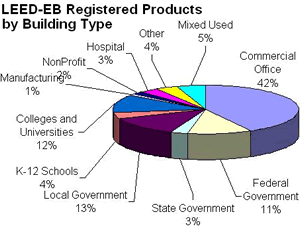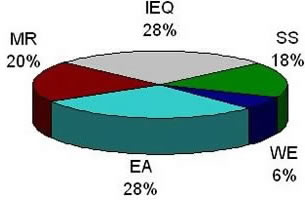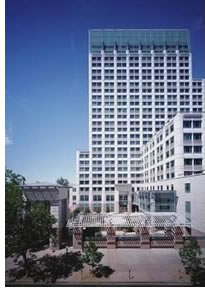

11/2004
 The U.S. Green Building
Council announced October 22 the release of the LEED™ for Existing
Building (LEED-EB) Green Building Rating System. LEED-EB makes LEED certification
available to existing buildings and provides an opportunity for ongoing
recertification for previously certified LEED buildings.
The U.S. Green Building
Council announced October 22 the release of the LEED™ for Existing
Building (LEED-EB) Green Building Rating System. LEED-EB makes LEED certification
available to existing buildings and provides an opportunity for ongoing
recertification for previously certified LEED buildings.
The LEED-EB criteria cover building operations and systems upgrades in existing buildings where the majority of interior or exterior surfaces remain unchanged. The LEED Rating System for Existing Buildings addresses:
- Whole-building cleaning and maintenance issues, including chemical use
- Ongoing indoor air quality
- Energy efficiency
- Water efficiency
- Recycling programs and facilities
- Exterior maintenance programs
- Systems upgrades to meet green-building energy, water, IAQ, and lighting performance standards.
 A total of 85 points are available in six categories: sustainable
sites (14); water efficiency (5); energy and atmosphere (23); materials
and resources (16); indoor environmental quality (22); innovation in
operations, and upgrades (5).
A total of 85 points are available in six categories: sustainable
sites (14); water efficiency (5); energy and atmosphere (23); materials
and resources (16); indoor environmental quality (22); innovation in
operations, and upgrades (5).
The next LEED phase
“We are very excited that LEED-EB has been approved by the ballot
of our USGBC members,” says Rick Fedrizzi, USGBC president, chief
executive office, and founding chair. “LEED-New Construction is rapidly
transforming the design and construction of new buildings to sustainable
practices. Now, with LEED-EB approved, the USGBC has the tools in place
to start transforming the existing-buildings market to sustainable practices
as well.”
Development of LEED-EB started in 2001, and the pilot launched in January 2002. Almost 100 projects participated in the pilot program, which includes 31.5 million square feet in 28 states, 2 Canadian provinces, and Brazil. Five LEED-EB certifications have been announced (National Geographic Headquarters, Thomas Properties Group/California EPA Building, JohnsonDiversey Global Headquarters, Johnson Controls Brengel Technology Center, and the King County King Street Center) and more were to be announced at the USGBC’s Greenbuild International Conference and Expo in Portland, Ore., November 11.
 Case study
Case study
A case study of Thomas Properties Group Cal/EPA Headquarters, Sacramento,
is a best-practice example of the existing building rating system.
According to a PowerPoint presentation on the USGBC Web site, the building
received LEED-EB Platinum for fulfilling the following LEED criteria.
- Sustainable Sites, Alternative Transportation: Easy access to bus lines/light rail; Bicycle storage/changing facilities serving 7 percent of building occupants; 24 charging stations for alternative vehicles; program encouraging telecommuting and carpooling.
- Water Efficiency, Water Use Reduction: High-efficiency fixtures, waterless urinals, and other measures reduced water use by more than 20 percent below baseline.
- Energy and Atmosphere, Onsite Renewable Energy: 736 photovoltaic panels generate electricity that is delivered to the utility grid.
- Materials and Resources, Occupant Recycling: 210 3-in-1 recycling bins throughout the building, helping achieve a 50-percent waste stream recycling rate.
- Indoor Environmental Quality, Green Cleaning: Uses cleaning products that have received the Golden Seal Charter Team certification from the State of California.
The USGBC reports that the 950,000-square-foot office building cost $270,000,000, with annual net savings of $610,300.
Copyright 2004 The American Institute of Architects.
All rights reserved. Home Page ![]()
![]()
 |
||
Information on LEED-EB is available on the USGBC Web site. The balloted version of LEED-EB was published there electronically November 8.
|
||